#20. Goodfellas
In the 1990 crime film directed by Martin Scorsese, based on the book Wiseguy by Nicholas Pileggi (who co-wrote the movie script with Scorsese), the rise and fall of mob associate Henry Hill and its family are portrayed by famous actors like Ray Liotta, Robert de Niro and Joe Pesci. The film was nominated for six Academy Awards and won five awards from the British Academy of Film and Television Arts.
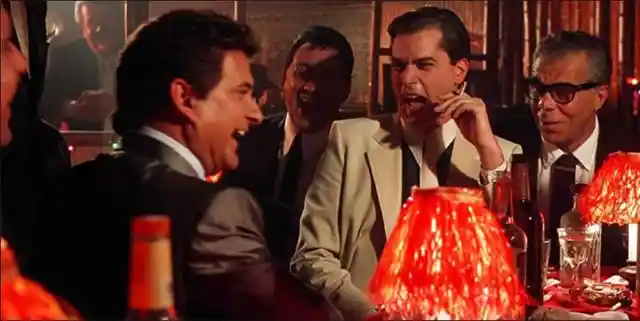
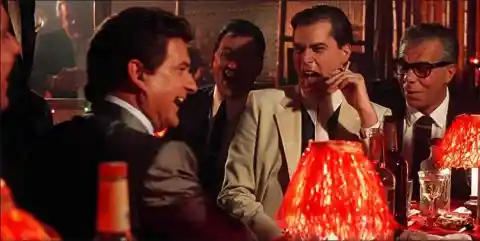
In order for a better portrayal of their mob characters, Liotta, De Niro and Pesci asked Nicholas Pileggi for help, so he provided them with research material that he had left from the book. As regards the several improvised scenes, Scorsese gave the trio rehearsal time to ad-lib scenes, which were then added to the script. Nonetheless, the famous “Funny Guy” scene was based on an incident from when Joe Pesci worked in a restaurant. He said “You are funny” to a mob, who did not find the comment funny at all.
#19. Midnight Cowboy
Another book-based film, this time starring Jon Voight and Dustin Hoffman, Midnight Cowboy was released in 1969 and was directed by John Richard Schlesinger, known for films like Marathon Man, The Believers and Eye for an Eye. The improvised scene resulted from a taxi driver who did not obey a “We’re filming” sign and entered the street.
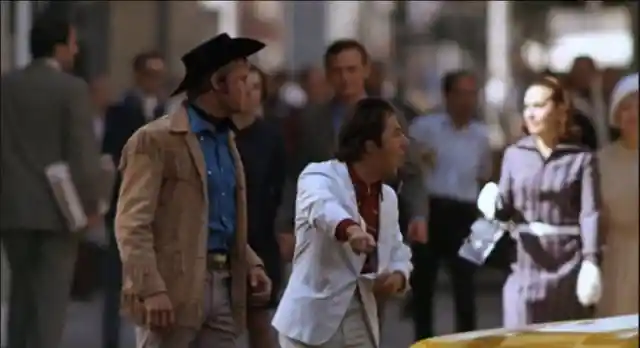

The whole situation resulted in Dustin Hoffman’s character, “Ratso” Rizzo, hitting the taxi’s hood and shouting “I’m walking here!“, right before turning to his friendo Joe Buck and saying “Actually, that ain’t a bad way to pick up insurance y’know”. In order for the limp to be consistent after the cab almost runs him over, Hoffman started using pebbles in his shoe.
#18. The Dark Knight
Moving from books to comic books, this time the not-so-improvised scene belongs to The Dark Knight movie, the second one in Christopher Nolan’s Batman trilogy. In this movie, Heath Ledger makes a perfect portrayal of The Joker, which made him win the Best Supporting Actor Academy Award. Ledger’s acting became an inspiration for several other actors portraying antagonists. For example, Michael B. Jordan named Ledger’s performance as an influence for his portrayal of Killmonger, the villain in Black Panther.
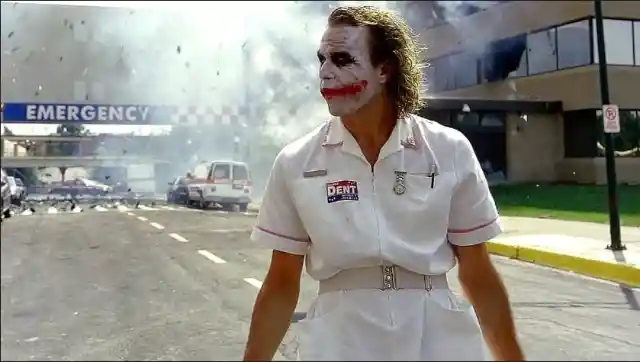
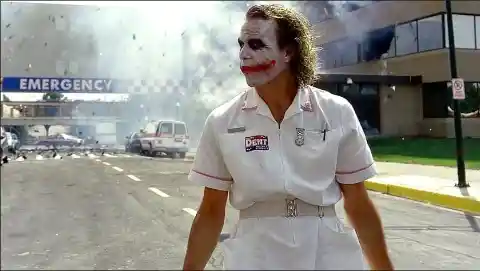
The moment in the film when The Joker makes a whole hospital explode had a little improvisation from the late actor. According to the script, several explosions were supposed to take place in this scene. But some of the explosions were delayed, which is why the actor gets confused when only one tiny explosion happens. A couple of moments later, while Ledger is jabbing at his detonator, the delayed explosions finally go off, causing The Joker to jump and then hurry off to his awaiting school bus. His reaction was completely real!
#17. Zoolander
The 2001 action-comedy film starring Ben Stiller, Owen Wilson, and Will Ferrell was directed by Stiller himself. The film involves Zoolander becoming the pawn of corrupt fashion executives who are plotting to assassinate the Prime Minister of Malaysia. A satire on the fashion industry and child labor, the film received mixed reviews from critics but was a box office success, and remains today one of the biggest comedy films by Stiller.
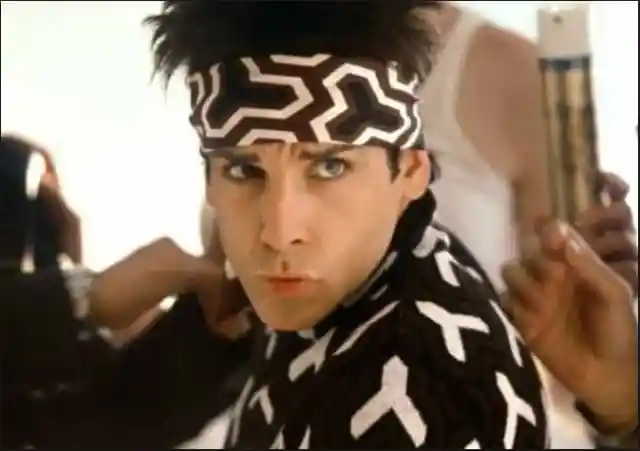
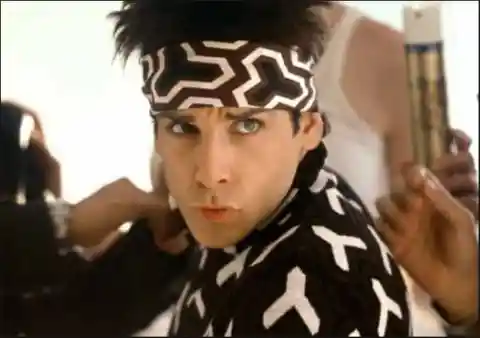
After David Duchovny’s speech about the corruption of the modeling world, Ben Stiller forgot his line and asked “Why male models?” again. According to a Reddit post by Ben Stiller himself in which he allowed users to ask questions, someone asked him about that specific line. Stiller answered:
“I literally was listening to what David Duchovny said, and I’m not really that much smarter than the character of Derek, and I honestly forgot, I hadn’t followed what he was saying, I said it again and got my lines wrong, and David (who’s a very funny guy) improvised the “are you serious? I just explained that.”
#16. Inception
Inception is a 2010 science fiction action film written, co-produced, and directed by Christopher Nolan. The film stars several actors who had already worked with Christopher Nolan, such as Cillian Murphy and Michael Caine. Leonardo DiCaprio portrays the lead character Dominic Cobb, a professional thief who specializes in conning secrets from his victims by infiltrating their dreams, and he was the first actor to be cast in the film.
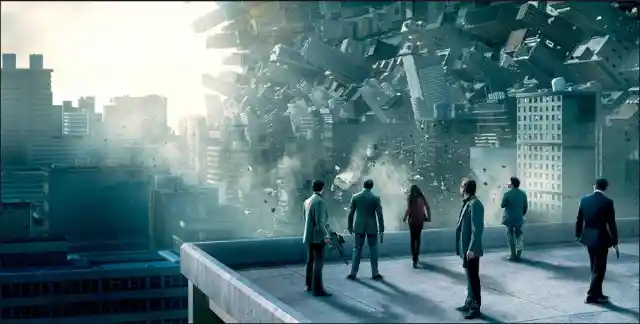
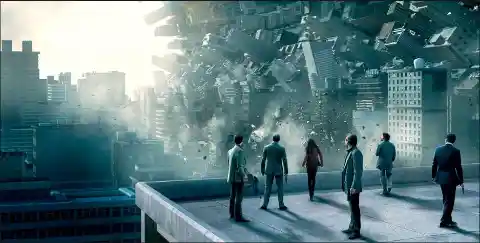
Another one of the famous actors to appear in the film is Tom Hardy, playing the part of Eames, an associate of Cobb specialized in forgery, more accurately identity theft. Eames uses his ability to impersonate others inside the dream world in order to manipulate the antagonist. In one of the action scenes, Tom Hardy improvised the “You mustn’t be afraid to dream a little bigger, darling” line. The directors thought it was funny, and so they kept it.
#15. The Godfather
The Godfather, known to be Francis Ford Coppola’s masterpiece adaptation of Mario Puzo’s gangster novel, was premiered on March 15, 1972, and starred Marlon Brando as Vito Corleone, an orphaned Sicilian immigrant who builds a Mafia empire. Upon his death, Michael, his youngest son, succeeds him as the “Don” of the Corleone crime family. The film won the Oscar for Best Picture, Best Actor (for Brando) and Best Adapted Screenplay (for Puzo and Coppola).
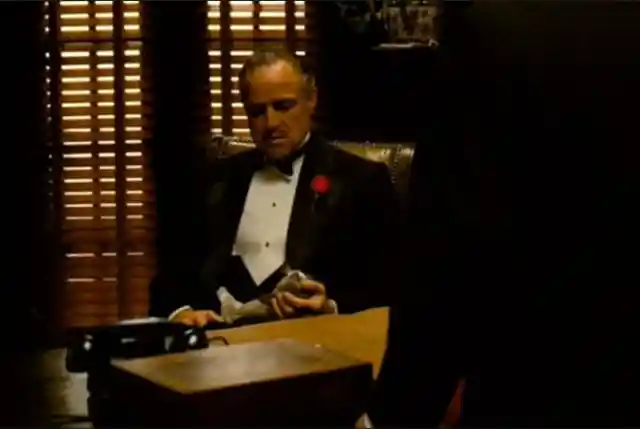
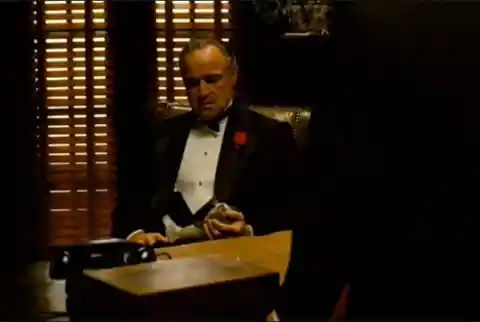
Vito Corleone is more than the cold-hearted head of a powerful Italian mob family, and that trait shows when he sentences a man to be beaten as retaliation for the beating of another man’s daughter – all while gently stroking a cat. The cat was brought in by director Coppola, as during his daily walks to the set, he would often see a stray cat wandering through the streets. So on the day they shot the scenes in Vito’s study, Coppola took the cat and told Brando to improvise with it.
#14. Saving Private Ryan
The 1998 American epic war film Saving Private Ryan, starring Matt Damon and Tom Hanks, was directed by the already famous director Steven Spielberg and written by Robert Rodat. The film is set during World War II, specifically during the Invasion of Normandy. The film was nominated for 11 Academy Awards, but won less than half of them, taking home only 5 awards: Best Cinematography, Best Sound Mixing, Best Sound Effects, Best Film Edition and Best Director.
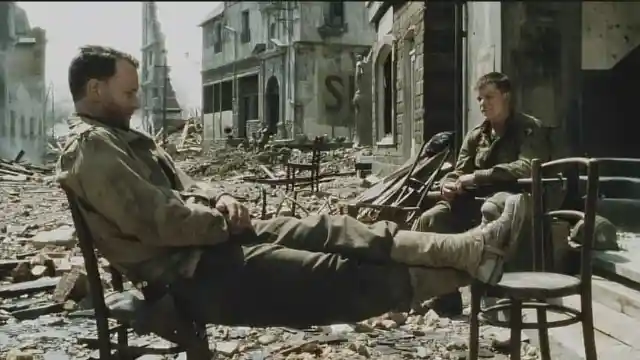
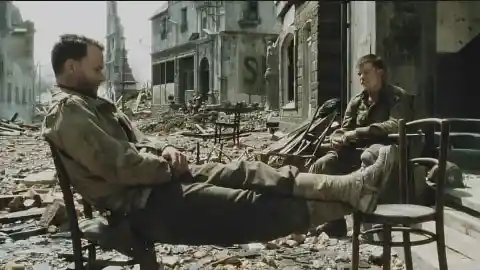
While waiting for an eventual German assault, Private Ryan and Captain Miller sit down for a break on a destroyed French street. The characters swap stories about their lives back home and Ryan proceeds to talk about a funny story where his oldest brother gets caught making out with a girl in a barn. That monologue from Damon was not in the script, and it was created completely off the cuff. While he wasn’t really noticed for his overall performance as Ryan, Damon still managed to take control of the scene and deliver a spontaneous hit.
#13. The Dark Knight
Returning to The Dark Knight, we got sufficient evidence to prove why Heath Ledger obtained the award for Best Supporting Actor. As The Joker waits quietly alone in jail after having been arrested by Jim Gordon (portrayed by Gary Oldman), Mayor Garcia shows up to look over Gotham’s latest scourge. At the same time, he also promotes Gordon to the position of Commissioner.

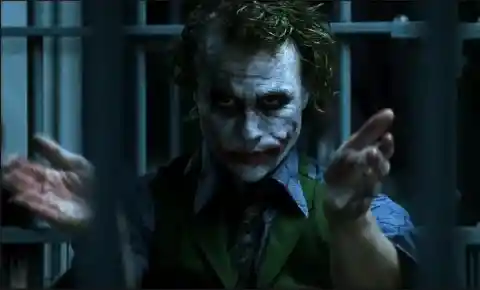
The scene that followed was a complete improvisation by Ledger. After the announcement of Gordon being promoted to the position of Commissioner, all police officers in the room start applauding, cheering and congratulating an astonished Gary Oldman. On the background, you can hear The Joker clapping while everyone in the room looks at him in awe. Ledger did not change his facial expression while applauding at all.
#12. Good Will Hunting
The 1997 American drama film Good Will Hunting was directed by Gus Van Sant and starred by late Robin Williams and Matt Damon (who wrote the script together with Ben Affleck). Damon plays a janitor who, as part of a deferred prosecution agreement after attacking a police officer, starts seeing a therapist and studies advance mathematics.
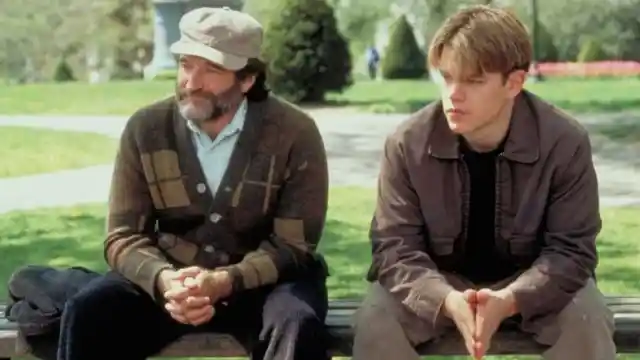
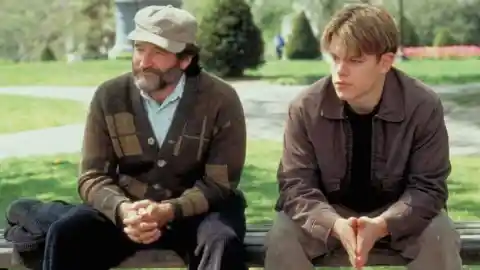
When Will Hunting (Matt Damon) is at one of his many therapy sessions with therapist Sean Maguire (Robin Williams), the latter decides to tell a personal story in order to get Hunter to open up emotionally. He begins to recall a memory about his late wife and her flatulent habits. This causes Hunting to laugh hysterically. The entire story was made up by Williams mid-scene. Damon’s laugh is actually genuine. And if you look closely, the camera shakes a tiny bit, most likely because the cameraman was laughing too.
#11. The Silence of the Lambs
The first film of Hannibal’s trilogy portrayed by Anthony Hopkins, and starring Jodie Foster in the role of FBI Trainee Clarice Starling, The Silence of the Lambs was released on February 14, 1991. It grossed $272.7 million worldwide against its $19 million budget, becoming the fifth-highest grossing film of 1991 worldwide. FBI trainee Clarice Starling is pulled from her training by Jack Crawford of the Behavioral Science Unit, who assigns her to interview Hannibal Lecter. It turns out that Lecter’s insight could prove useful in the pursuit of a serial killer nicknamed “Buffalo Bill“, who skins his female victims’ corpses.
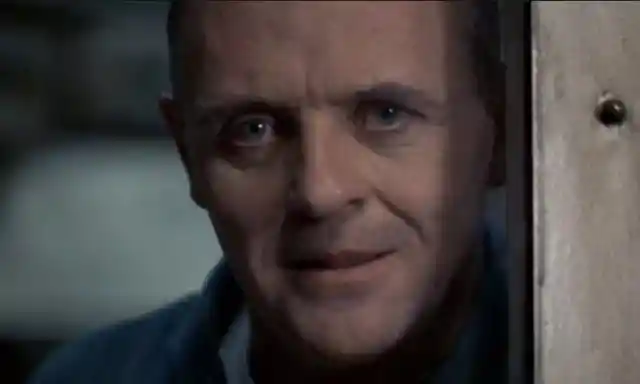
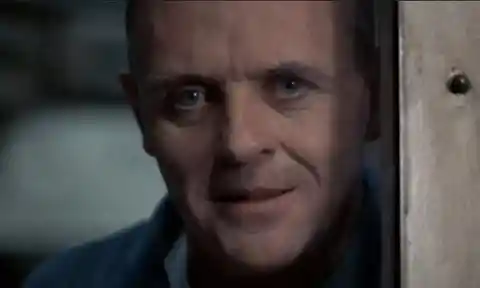
At one point in the film, Dr. Hannibal Lecter is telling a story to Clarice Starling about his cannibalistic tendencies, like eating the liver of a census-taker “with some fava beans and a nice Chianti.” Lecter then finishes with a freakish hissing sound, bringing the frightening scene to a revolting level. That famous hissing sound was actually something that Hopkins tried as a joke during rehearsals to spook Foster. Director Jonathan Demme decided to keep it to maximize the impact on audiences. Thanks to his brilliant performance, even though he had 25 minutes on screen, Hopkins won an Academy Award for Best Leading Actor.
#10. Being John Malkovich
In 1999, writer Charlie Kaufman and director Spike Jonze joined forces to make Being John Malkovich. The fantasy comedy told the story of a puppeteer named Craig Schwartz (John Cusack) who discovers a portal into the brain of actor John Malkovich (played by Malkovich himself). Kaufman wrote the script in 1994, combining two disparate ideas: a man falling for a woman who was not his wife, and someone finding a portal into John Malkovich’s head.
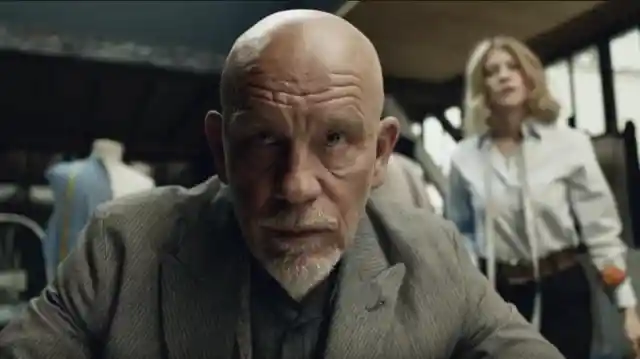
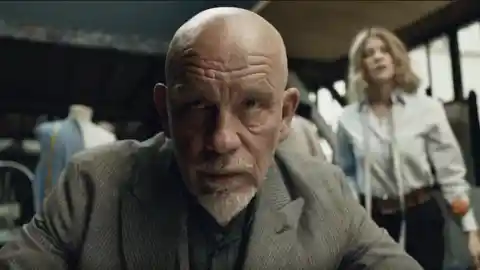
To everyone’s surprise, the scene in which a can is thrown at John Malkovich’s head is real. Malkovich has described how Spike Jonze wanted to cut the scene, supposing that no one would be able to hit him on the head with a half-full can of beer from a passing car. However, about 70 or 80 sets of hands shot up on the crew saying that they would like to try. Eventually, the task fell to John Cusack’s writing partner and he nailed it on the first try.
#9. The Shining
Another famous movie based on a best-selling horror book by Stephen King, The Shining was released in 1980 and was produced and directed by Stanley Kubrick, and got mixed reviews both from the public and from Stephen King. In his review, the writer said:
“Although Kubrick made a film with memorable imagery, it was poor as an adaptation and that it is the only adaptation of his novels that I came to hate”.
Nonetheless, Stephen King listed Kubrick’s film among those he considered to have “contributed something of value to the horror genre” and mentioned it as one of his “personal favorites directors”.
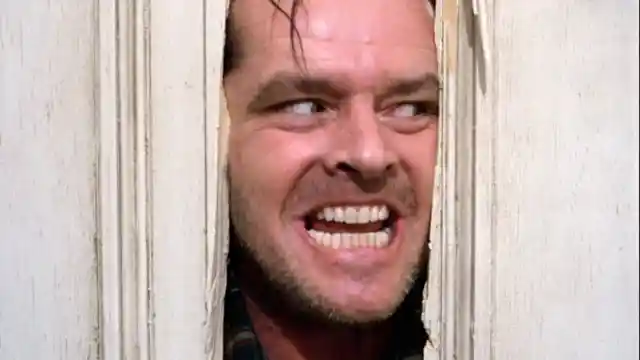
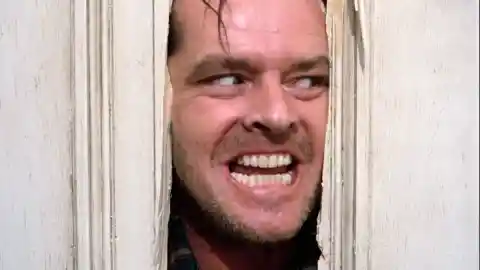
Wendy Torrance and her son Danny are hiding from their deranged husband and father Jack Torrance in a hotel bathroom. A window stuck half-open allows the son to escape outside, but still traps the mother inside the room. Jack slowly makes his way up the staircase with an ax and begins chopping through the door, complemented by Wendy’s wailing screams. Jack then places his head through the jagged wooden opening and says: “Here’s Johnny!”. Nicholson actually decided to use that line because it was Ed McMahon’s popular catchphrase introducing the highly non-threatening Johnny Carson on The Johnny Carson Show.
#8. Full Metal Jacket
Another war film, this time set in the Vietnam War, and directed, produced and co-written by Stanley Kubrick, Full Metal Jacket stars Matthew Modine and Vincent D’Onofrio. The storyline follows a platoon of U.S. Marines through their training, primarily focusing on two privates, Joker (Modine) and Pyle (D’Onofrio) who struggle to get through boot camp under their abusive drill instructor, Gunnery Sergeant Hartman.
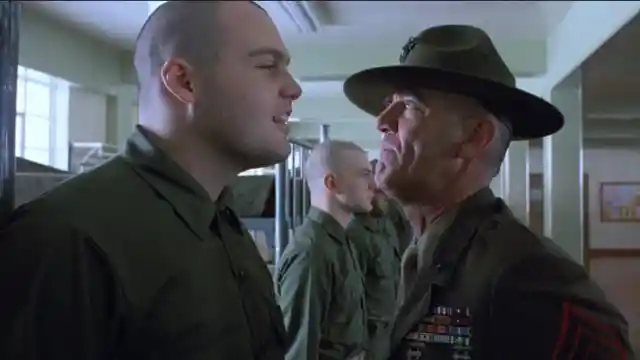
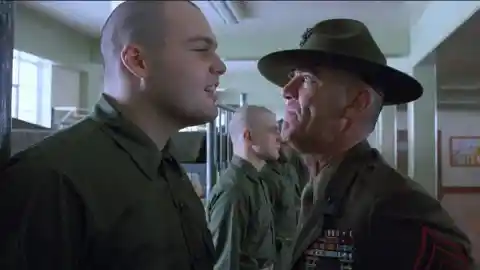
The actor playing Gunnery Sergeant Hartman, R. Lee Ermey, had been a real drill sergeant, and that came in handy for director Kubrick. Nearly every single insulting caterwauled line that Earney delivered was of his own devising – including the classic:
“Now, you listen to me, Private Pyle. And you listen good. I want that weapon, and I want it now. You will place that rifle on the deck at your feet, and step back away from it.”
According to Kubrick, 50% of the insults that Earney delivered were his own. Meaning this one was half improvised!
#7. Raiders of the Lost Ark
Raiders of the Lost Ark is a 1981 American action-adventure film directed by Steven Spielberg, and is the first installment in the Indiana Jones franchise. It stars actor Harrison Ford as Indiana Jones, an archaeologist who fights the Nazis while searching for the Ark of the Covenant. This movie became 1981’s top-grossing film and remains one of the highest-grossing films ever.
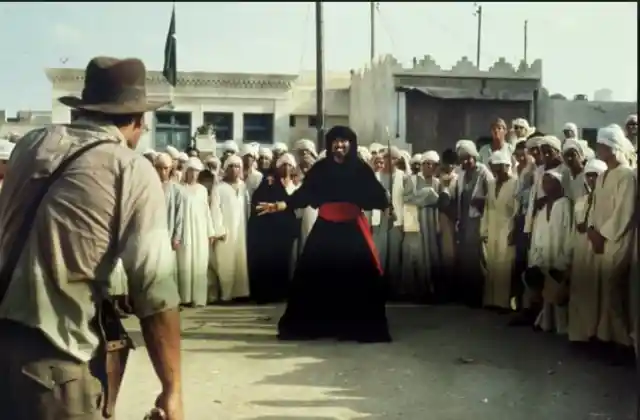
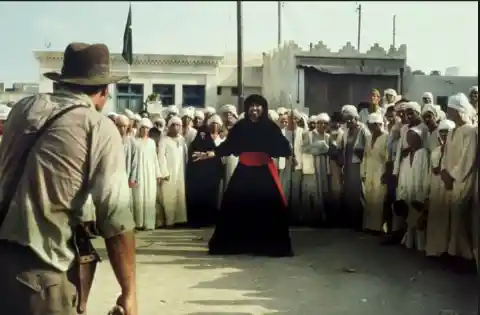
In the middle of a wild chase in the markets of Cairo, Indiana Jones runs into a crowd, which disperses to reveal a black-robed warrior handling a large sword. After facing some intimidating sword spinning, Jones decides to conserve some energy, so he takes out his revolver and shoots the villain down. Jones was meant to engage in a massive sword fight with the blade-wielding antagonist, but when Ford came down with food poisoning the day before the shooting, the actor asked if the scene could be altered to be less strenuous. The result is arguably far better than scripted.
#6. Dr. Strangelove
Another film written, produced and co-written by Stanley Kubrick Dr. Strangelove, a 1964 political satire black comedy about the Cold War. The movie satirizes the nuclear conflict between the United States and the Soviet Union, and stars Peter Sellers in three roles: Group Captain Lionel Mandrake, President Merkin Muffley and Dr. Strangelove. Sellers playing three roles was a condition set by Columbia Pictures to finance the film. Kubrick accepted the demand, later explaining that “such crass and grotesque stipulations are the sine qua non of the motion-picture business“.
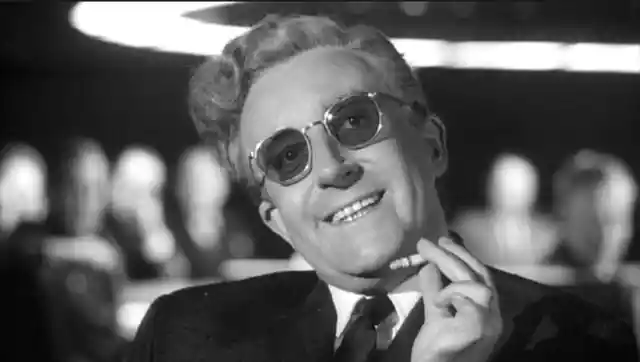
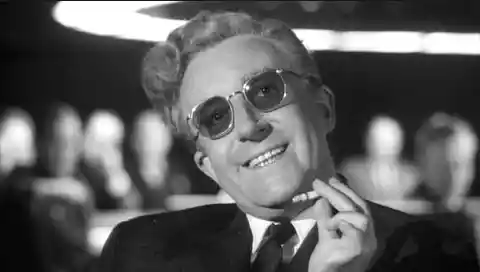
One of the characters being played by Sellers is a wheelchair-bound nuclear weapon expert, who has past associations with the Nazis. Constantly calling the US president “Mein Fuhrer”, strangling himself, and pushing down his involuntary Nazi salutes all made Seller’s character what it is. The final line of the film, “Mein Fuhrer, I can walk!” was also apparently made up by Sellers, as he got out of his chair forgetting he was supposed to be disabled.
#5. Jaws
Jaws may be one of the most famous thriller films ever made. The film pictures an animal as the beast that the main characters have to hunt down. It was released in 1975 and directed by Steven Spielberg, and the story was based on the homonymous 1974 novel written by Peter Benchley. In the film, a giant man-eating great white shark attacks beachgoers on Amity Island, a fictional New England summer resort town, while Police Chief Martin Brody (portrayed by Roy Scheider) hunts the shark down with the help of marine biologist Matt Hooper (played by Richard Dreyfuss).
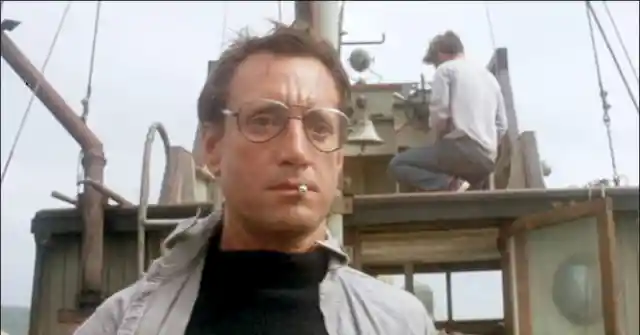
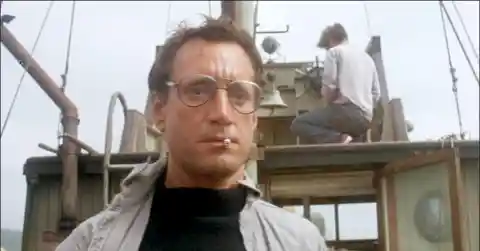
The famous phrase by Scheider, “You’re are going to need a bigger boat” was uttered while chumming the waters in an attempt to lure the deadly great white shark within range. This scene is the first time that the Police Chief understands exactly how massive the killer shark is. Stunned, startled and filled with fear, he stands up and yells the now-famous “bigger boat” line to Orca Captain Quint (played Robert Shaw), completely off-script. As it turns out, he was right: they did need a bigger boat to hunt down the shark!
#4. Blade Runner
Loosely based on the 1968 book Do Androids Dream of Electric Sheep? by Phillip K. Dick, Blade Runner is a 1982 science fiction film directed by Ridley Scott, right after the success of Alien. The film stars Harrison Ford, Rutger Hauer and Sean Young. Blade Runner won the Hugo Award for Best Dramatic Presentation, and in 1993 it was selected for preservation in the United States National Film Registry by the Library of Congress as “culturally, historically, or aesthetically significant“.
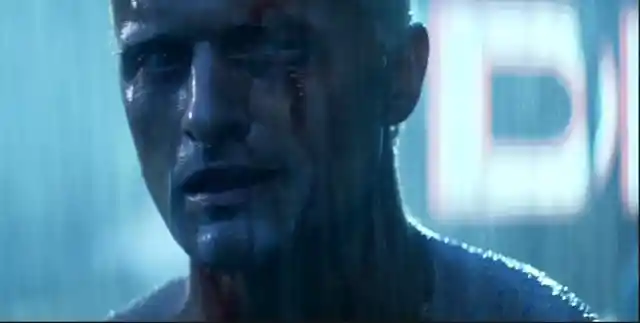
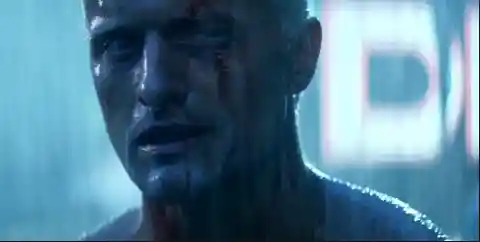
Roy Batty’s death speech was scripted as a lengthy monologue, but Hauer felt it didn’t bring much impact to the Replicant’s death, so he modified it the night before filming. Hauer cherry-picked certain phrases of the original script and added the final “Lost… like tears in the rain” all by himself. This is the whole speech as modified by Hauer:
“I’ve seen things you people wouldn’t believe. Attack ships on fire off the shoulder of Orion. I watched C-beams glitter in the dark near the Tannhäuser Gate. All those moments will be lost in time, like tears in rain. Time to die.”
#3. Taxi Driver
Taxi Driver, starring Robert De Niro and Jodie Foster, was written by Paul Schrader and directed by Martin Scorsese in 1976. The film tells the story of a lonely veteran working as a taxi driver, who descends into insanity as he plots to assassinate both the presidential candidate for whom the woman he is infatuated with works for, and the pimp of an underage prostitute he befriends. Controversy arose around the film upon release mostly because of its depiction of violence and casting of a 12-year old Foster as the child prostitute.

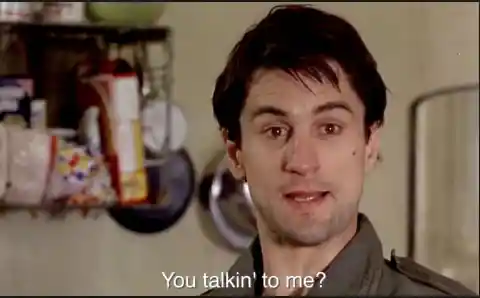
Eventually, Travis Bickle (Robert De Niro) reaches a neurotic and sociopathic moment, where he decides to talk to himself in the mirror. Pretending to confront the presidential candidate, and while looking at his reflection in the mirror, he repeatedly says “You talkin’ to me?” before drawing his gun. The original script by Schrader only stated that “Travis talks to himself in the mirror“. De Niro decided to take advantage of his character’s mental state and performed one of the most classic one-liners used today when walking by a mirror.
#2. The Empire Strikes Back
The second installment in the original Star Wars trilogy, The Empire Strikes Back was directed by Irvin Kershner, while George Lucas served as executive producer. The film is set three years after Star Wars – A New Hope. When released on May 21, 1980, the film initially received mixed reviews from critics, but ever since it has grown in esteem, becoming the most critically acclaimed film in the Star Wars franchise.
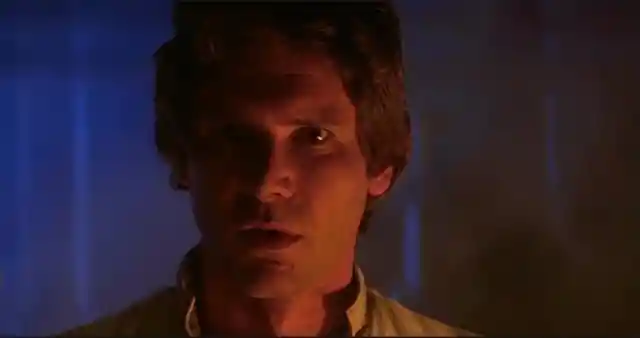
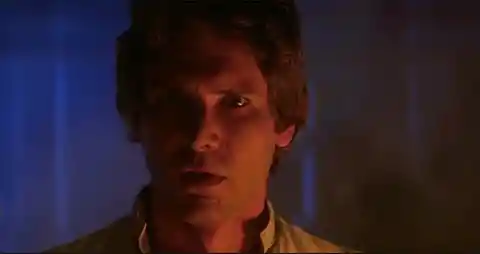
The captain of the Millenium Falcon, Han Solo (portrayed by Harrison Ford), is described by George Lucas as “a cynical loner who realizes the importance of being part of a group and helping for the common good“. In the previous scene, in which he is frozen in carbonite by Darth Vader, Princess Leia (portrayed by Carrie Fisher) finally confesses her feelings for the rogue, telling him: “I love you“. The original response in the script for Ford was “I love you, too“, but George Lucas told Ford to just say what he thought was best and “I know” was the result, fitting in with his character’s persona perfectly.
#1. 50/50
50/50 centers on a cancer-stricken young man named Adam (portrayed Joseph Gordon-Levitt) and his good friend Kyle (Rogen), who helps him through his illness. The film released in 2011 was written by Will Reisser and directed by Jonathan Levine. The film was inspired by the director's struggle with cancer and received critical acclaim, with particular praise for Gordon-Levitt's performance.
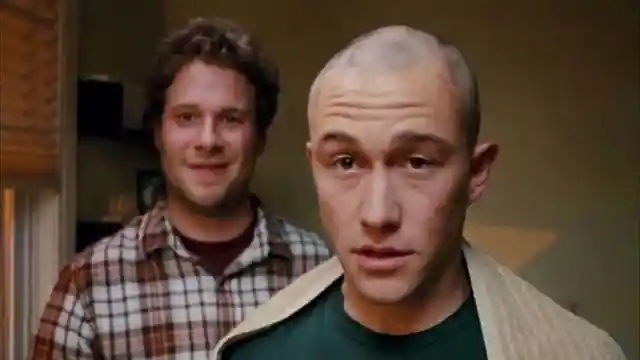
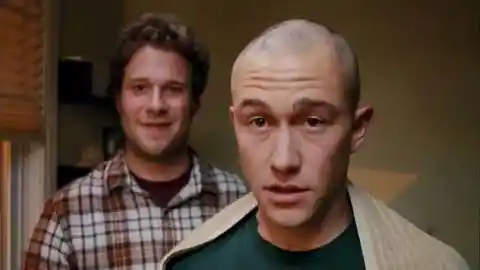
Talking to MTV News, Rogen revealed that the head-shaving scene was not originally on the movie script. As Rogen recalls:
"We only had one shot at it. It was the first day of filming, and we improvised the whole thing, which is not wise when it's something you have one take for, but it turned out funny. It went exactly how you see it in the movie, which was pretty good, I think,"